Never pass a stopped school bus regardless of whether you are driving behind the bus or driving towards it. When the bus stops to let children get on or off, you will see flashing lights and stop signs that come out from the sides of the bus. Expect children to be in the area. Wait until the bus begins to move, and then proceed with caution as children may still be along the roadside.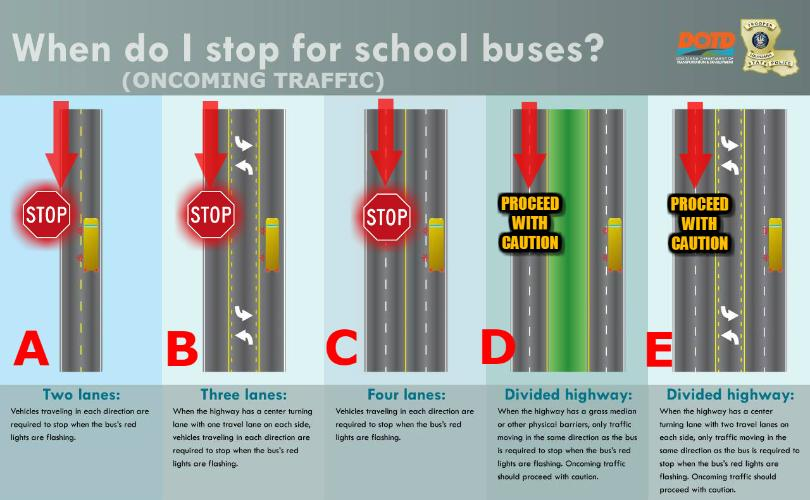
Category Archives: First Aid and Safety
DRIVING IN THE SNOW
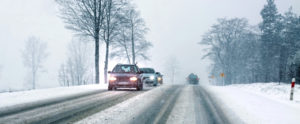 If the snow &/or ice is heavy or threatening to become heavy, don’t go out. It is not worth the risk. Cancel, change plans, make due. If you must go out, keep the trip as short as possible, and follow these guidelines.
If the snow &/or ice is heavy or threatening to become heavy, don’t go out. It is not worth the risk. Cancel, change plans, make due. If you must go out, keep the trip as short as possible, and follow these guidelines.
When there is snow &/or ice on the street:
1. If your car has been outside, warm up the car and clean the snow & ice off all windows, windshields, and hood using a brush & scraper (make sure your headlights and brake lights are snow free). Do not warm up a car in a closed garage.
2. Go more slowly than usual, and leave more time than you normally would to get where you’re going.
3. Keep a safe distance between you and the vehicle(s) ahead of you. Safe distance in snow is double the normal distance.
4. Turn your headlights on if it is snowing (and any time you use your windshield wipers). In heavy snow, fog lights might also be helpful (but not all cars have them).
5. Don’t make sudden or jerky movements with steering, and don’t accelerate or brake forcefully. This can cause you to slide and lose control.
6. If you start to slide or skid, take your foot off the gas pedal and keep steering & looking where you want to go. When you are headed the right way again and feel some traction, accelerate slowly (or brake slowly). If your wheels start to spin, take your foot off the gas pedal until you feel the tires grab again.
7. When you break, push the break gently. If you have anti-lock brakes, you will hear a thumping sound which is normal (it is the way the car prevents the brakes from locking up and making the situation worse). If you have regular brakes, pump them slowly, keeping your heel on the floor and the ball of your foot on the brake pedal (this helps you to be gentler because you are using only your foot, not your whole leg).
8. If you need to get out of a parking space with a lot of snow, you might need to “rock” the car, going forward a little, then back a little, over and over. Keep the wheels fairly straight, with only slight movements left or right. It is really difficult to get over snow when the wheels are turned hard to the left or right. If that doesn’t work, you may need to either shovel the snow out of the way or put down sand, kitty litter or gravel to get traction (some families keep a bag of this in the trunk).
9. Keep your gas tank at least ¼ full so that the gas line doesn’t freeze (if extra moisture gets in the line), and keep your windshield wiper fluid 1/2 full or more. You don’t want to run out of wiper fluid in the middle of the road with trucks spewing dirty slush onto your windshield.
10. Never use the cruise control in snow, ice or rain. It can cause the car to hydroplane and you could lose control.
Safety Tips at the Bus Stop
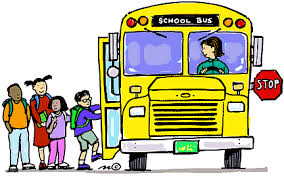
- Leave enough time to get to the bus stop safely.
- Walk and hold hands to the stop.
- Stand on the sidewalk or the grass, not in the street.
- Wait until the bus comes to a complete stop before the children walk to the door.
- Let the bus driver open the door. Do not try to push it open.
- Remind the children to sit on the bus and not stand. If there are seat belts, remind them to put them on.
- Let the bus leave before you do, just in case there is a problem.
- Be at the afternoon return bus stop in plenty of time, before it comes. There are times when it will be early.
- The driver is not allowed to let small children off the bus unless someone greets them, so if you are not there the children will be taken back to school. BE THERE.
- The bus driver will not leave until you are safely on your side of the street. If you need to cross the street, do it in front of the bus.
Three Ways for Au Pairs to Stay Red Cross Ready
Being knowledgeable in basic first aid and CPR is important for au pairs (and anyone else caring for children). Au Pair in America’s commitment to infant/child safety begins before au pairs arrive to the U.S., with pre-arrival training, and continues throughout the au pair year.
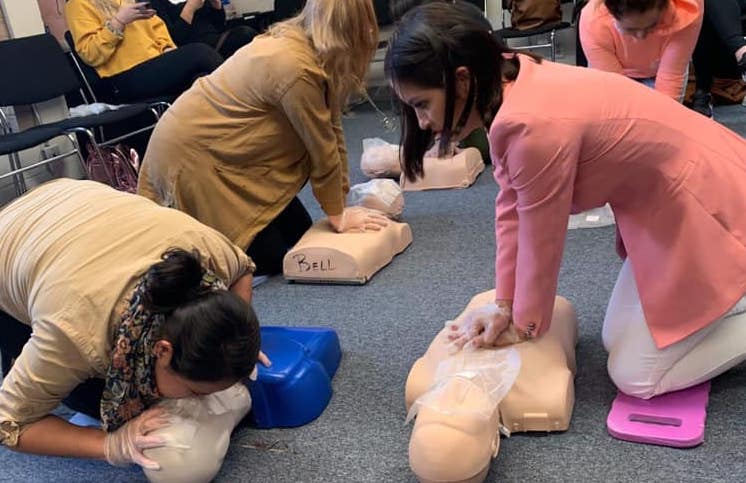
#1 Training At Orientation
Our orientation includes seminars by American Red Cross instructors who provide hands-on demonstrations in infant/child CPR and safety. Printed materials are provided that reinforce the safety information and can be used to review from time to time.
#2 Enroll in a Red Cross Certification Class
After settling into their host community, all au pairs are encouraged to complete an Infant/Child CPR and First Aid certification program through the American Red Cross.
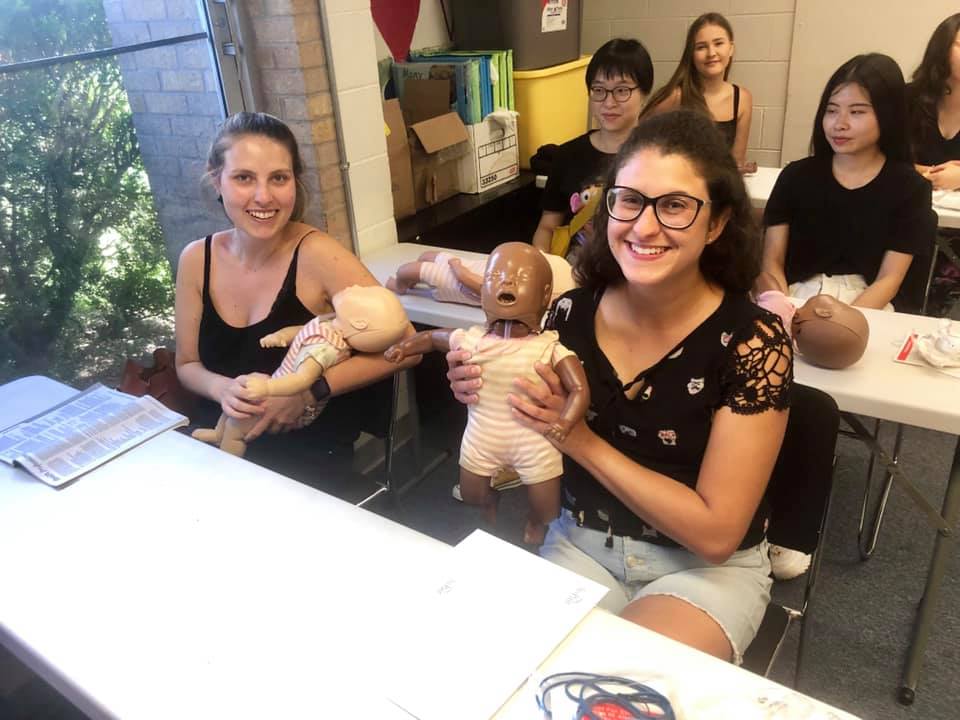 Au Pair in America will pay for the cost of the class provided an au pair has at least six months left on her visa and is taking one of several approved childcare/child safety-related classes, such as Adult and Pediatric First Aid/CPR/AED. Au pairs should check with their community counselor and host family before signing up. Au Pair in America will register the au pair directly.
Au Pair in America will pay for the cost of the class provided an au pair has at least six months left on her visa and is taking one of several approved childcare/child safety-related classes, such as Adult and Pediatric First Aid/CPR/AED. Au pairs should check with their community counselor and host family before signing up. Au Pair in America will register the au pair directly.
To locate a class, visit www.redcross.org/takeaclass. For step-by-step instructions on how to locate a class and have Au Pair in America complete enrollment, click here.
#3 Stay Current on Safety Information
The Official American Red Cross First Aid app puts expert advice for everyday emergencies in your hand. Available for iPhone and Android devices, this app gives you instant access to the information you need to know to handle the most common first aid emergencies. With videos, interactive quizzes and simple step-by-step advice, it’s never been easier to know first aid. Download the app for free from the American Red Cross website or in your app store.
Photos: Robin Leon
